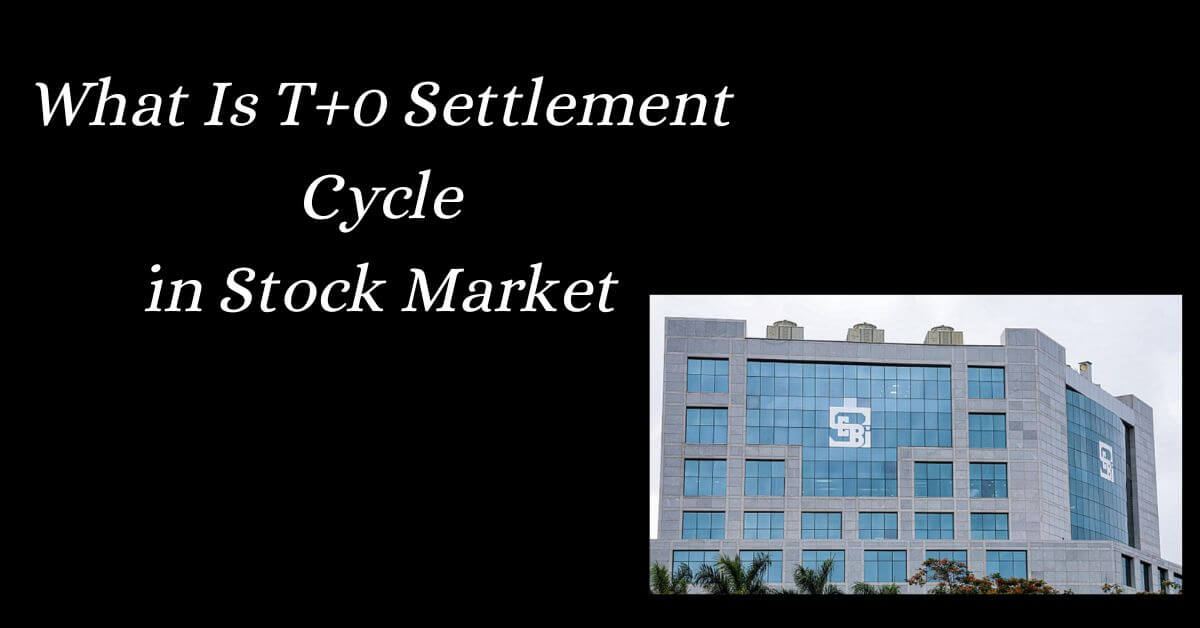In a T+0 settlement cycle, also known as Trade Plus Zero settlement cycle, the delivery of securities (stocks and bonds) and the corresponding funds occur on the same business day that the trade is executed. This means that if you buy a stock on a T+0 settlement day, you will receive the shares and the seller will receive the payment by the end of that same day.
Understand in T+0 Settlement Cycle in Simplified Manner
Let’s break down T+0 settlement for you. It’s a new way to trade where the transfer of stocks and money happens on the same day, instead of the usual one business day wait (T+1).
But for now, it’s only optional for 25 stocks and can only be done between 9:15 am and 1:30 pm. There’s also a limit on how much the price can move up or down compared to the regular T+1 trading.
Break it down even further:
Imagine you buy a stock on Monday under the T+0 settlement. With regular T+1 settlement, you would receive the stock on Tuesday and the seller would get your money on Tuesday. But with T+0, both the stock and money transfer happen on Monday itself.
Why the time limit in T+0 Settlement Cycle?
The time limit (9:15 am to 1:30 pm) is likely because settling trades same-day requires extra work for brokers. So they might start slow with a shorter window.
Why the Price Band in T+0 Settlement Cycle?
The price band (100 basis points above or below the regular price) is likely to control any major price swings that might happen due to this new and faster way of trading.
Overall, T+0 settlement is a new experiment to see if it can improve efficiency in the stock market.
Also Check: How To Select Stocks for Swing Trading Based on FII Buying Using 2 Free Tools
Also Check: What is the Relation Between Trigger Price And Stop Loss Price | Trigger Price Meaning
T+0 Settlement Cycle with Example
Let’s understand T+0 Settlement Cycle with Example
Let’s say you want to buy 100 shares of MRF on the Bombay Stock Exchange (BSE) under the new T+0 settlement cycle. Here’s a breakdown of how it would work:
Normal T+1 settlement cycle:
- You place an order to buy 100 shares of MRF on Monday at Rs 100 per share.
- The trade gets executed (matched with a seller) on Monday.
- The shares get transferred from the seller’s account to yours on Tuesday (T+1).
- The money for the shares gets transferred from your account to the seller’s account on Tuesday (T+1).
T+0 settlement cycle with MRF:
- Since MRF is part of the new T+0 settlement program, you can choose to opt for T+0 settlement when placing your order on Monday.
- Let’s assume the price band for MRF is 100 basis points (1%) above or below the regular T+1 price. So, the valid price range for your T+0 order would be Rs 99 (100 basis points below Rs 100) and Rs 101 (100 basis points above Rs 100).
- Your order gets executed (matched with a seller) between 9:15 am and 1:30 pm on Monday.
- Critically, both the transfer of the 100 MRF shares from the seller’s account to yours and the transfer of money from your account to the seller’s account happen on the same day, Monday (T+0).
Key Points to Remember
- T+0 settlement for MRF is optional, you can still choose the regular T+1 settlement if you prefer.
- The T+0 settlement window is limited from 9:15 am to 1:30 pm.
- The price you buy or sell MRF shares under T+0 will be within the 100 basis point band of the T+1 price.
Overall, T+0 settlement aims to speed up the trade settlement process by transferring the securities and funds on the same day. However, it’s currently optional and has a limited time window.
Complete list of Stocks Eligible for T+0 Settlement:
Ambuja Cements Ltd
Ashok Leyland Ltd
Bajaj Auto Ltd
Bank of Baroda
Bharat Petroleum Corporation Ltd
Birlasoft Limited
Cipla Ltd
Coforge Limited
Divis Laboratories Ltd
Hindalco Industries Ltd
Indian Hotels Co.Ltd
JSW Steel Ltd
LIC Housing Finance Ltd
LTI Mindtree Limited
MRF Ltd
Nestle India Ltd
NMDC Ltd
Oil and natural gas corporation
Petronet Lng Ltd.
Samvardhana Motherson International Ltd
State Bank of India
Tata Communications Ltd
Trent Ltd
Union Bank of India
Vedanta Limited
History of Settlement Cycles in Indian Stock Market

The settlement cycle in the Indian stock market was shortened from T+5 to T+3 in 2002 and then further to T+2 in 2003. In 2021, SEBI introduced the T+1 settlement cycle in a phased manner, which was fully implemented from January 2023.
As of March 28, 2024, a limited T+0 settlement cycle is being piloted for select stocks (currently 25).
Disclaimer: This analysis is for informational purposes only and should not be considered financial advice. Please consult with a qualified financial advisor before making any investment decisions.
